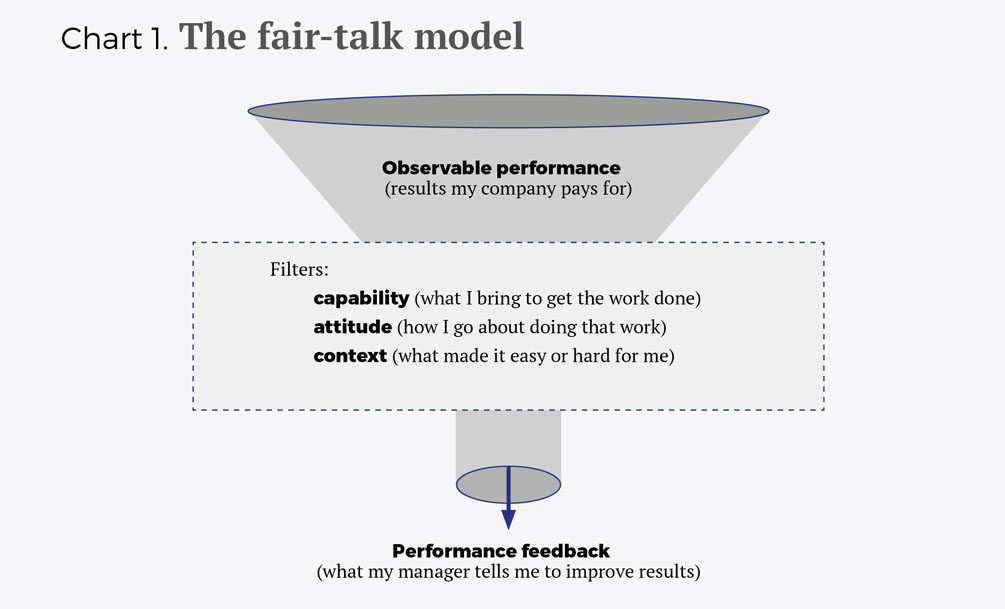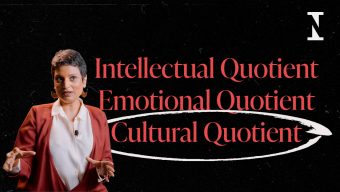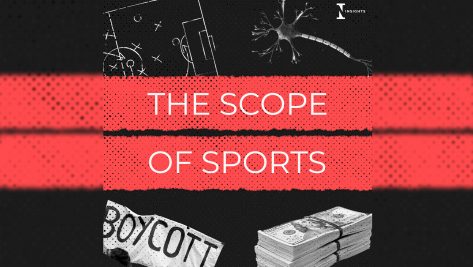Performance feedback is essential for the growth and improvement of all organizations. In order to be effective, however, the feedback must be constructive and fair. Many leaders are reluctant to provide feedback because they feel inadequate for the task, are concerned about harming feelings, have a skewed view of the situation, or just have poor leadership skills.
However, it has been proven that good feedback enhances employee performance. The first step to creating a feedback culture is to equip leaders to provide constant feedback. Over time, this will cultivate an environment within their organizations where feedback is the norm. Providing leaders with a simple framework to structure their feedback provides a strong start. We propose a simple, three step model.
One of the most effective ways to ensure that feedback is fair and accurate is to incorporate calibration into the evaluation process.
Three-Step Feedback Model
The first consideration for improving employee performance and ultimately achieving a real, tangible change is to establish a clear expectation for this change and a detailed plan to carry it out. The most important aspects that must be measured in terms of observable performance include capability, attitude, and context. These can be translated into a three-step feedback formula:
- The first step of the process is “tell me why it matters,” in which the leader should make it clear why the topic is worthy of attention and effort. People will be more likely to work toward positive change if they understand the purpose and value of their task.
- The second step is the actual delivery of the relevant information on the observable performance, or “tell me how I did it.” Performance must be evaluated so that employees know what they did right and what they did wrong.
- Finally, the leader must create the expectations for future performance, or “tell me what to do.” This involves reinforcing the good behaviors, or explaining changes that need to be made in the future. It is important for the leader to only choose one or two things for the employee to improve on. It is better to focus on improving in a few important areas than to overwhelm employees with too many changes at once.

Calibration in Evaluation
The three-step employee feedback formula assumes that the leader has an accurate perspective on what needs to change. One of the most effective ways to ensure that feedback is fair and accurate is to incorporate calibration into the evaluation process. Calibration is the process of reviewing and comparing performance of several individuals. Companies should apply it to increase the accuracy of assessment and feedback.
One form of calibration is to ask for input from other sources in addition to the customers. Although customer input is valuable, it usually focuses more on service levels than actual performance. Data will be more diverse and accurate if the company also collects information from its stakeholders and other sources.
The second source of calibration the company should apply is comparing employees with peers who are at similar roles and levels, as well as those in different ones. This will give leaders a more overarching idea of how people are performing within the company as a whole, rather than just their own department.
Another form of calibration is to ask leaders at the highest level to offer their evaluations because it is beneficial to have the input from a qualified, knowledgeable person in the organization. It is also rewarding to compare employees’ performance with their performance from the prior year to ensure that they are making personal improvements.
Finally, leaders can calibrate against the standards and norms of the industry by attending external conferences and events, as well as keeping in touch with prospective company candidates and others outside the organization. It is important to make comparisons with the outside world in order to make sure the organization is advancing along with others its industry.
The first step people can take to prevent the influence of bias in their lives is to admit that it exists within them.
The Role of Human Resources
It is the role of HR to design and implement the processes that are most impactful for individual and organizational performance. Feedback is one of them. HR must create a detailed evaluation process to make sure the managers’ feedback is fair and accurate. This is a difficult task because, in general, human performance is a messy business. It is even more difficult because everyone has personal biases. The human brain is wired to make quick, efficient survival decisions. As a result, people must be aware that it is their first instinct to take mental shortcuts to prevent cognitive overload. These shortcuts often take the form of stereotypes, rules of thumb, and biases.
The first step people can take to prevent the influence of bias in their lives is to admit that it exists within them. Three of the most common types of bias within organizations are social bias, cognitive bias, and organizational bias. Using a structured, consistent method of evaluation leaders can reduce these biases, which will result in more accurate and fair feedback to their employees. Thus, instead of letting the leaders invent their own methods and standards for feedback, HR should put in place clear guidelines and create correct expectations for collecting, calibrating, and delivering accurate, fair, and focused feedback.
By formally training leaders in structuring feedback, by requiring calibration and by driving awareness of cognitive biases, Human Resources will hardwire a culture of feedback overtime.
People experience the culture of a company through the behaviors of their managers. Those behaviors are fomented by the organizational hard-wiring (processes, structures, metrics, etc.) and the company’s leadership. HR is responsible for both. By dialing up the culture of feedback, we are strengthening the culture of performance.
© IE Insights.











